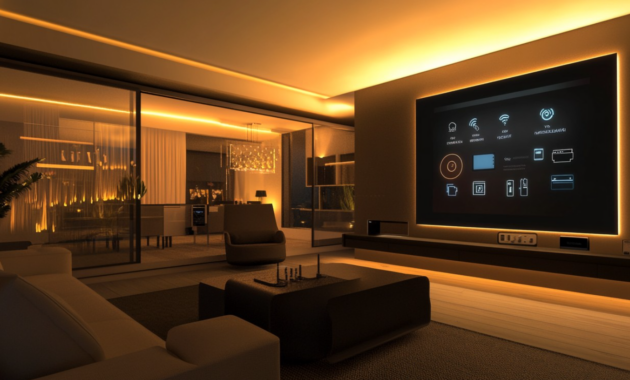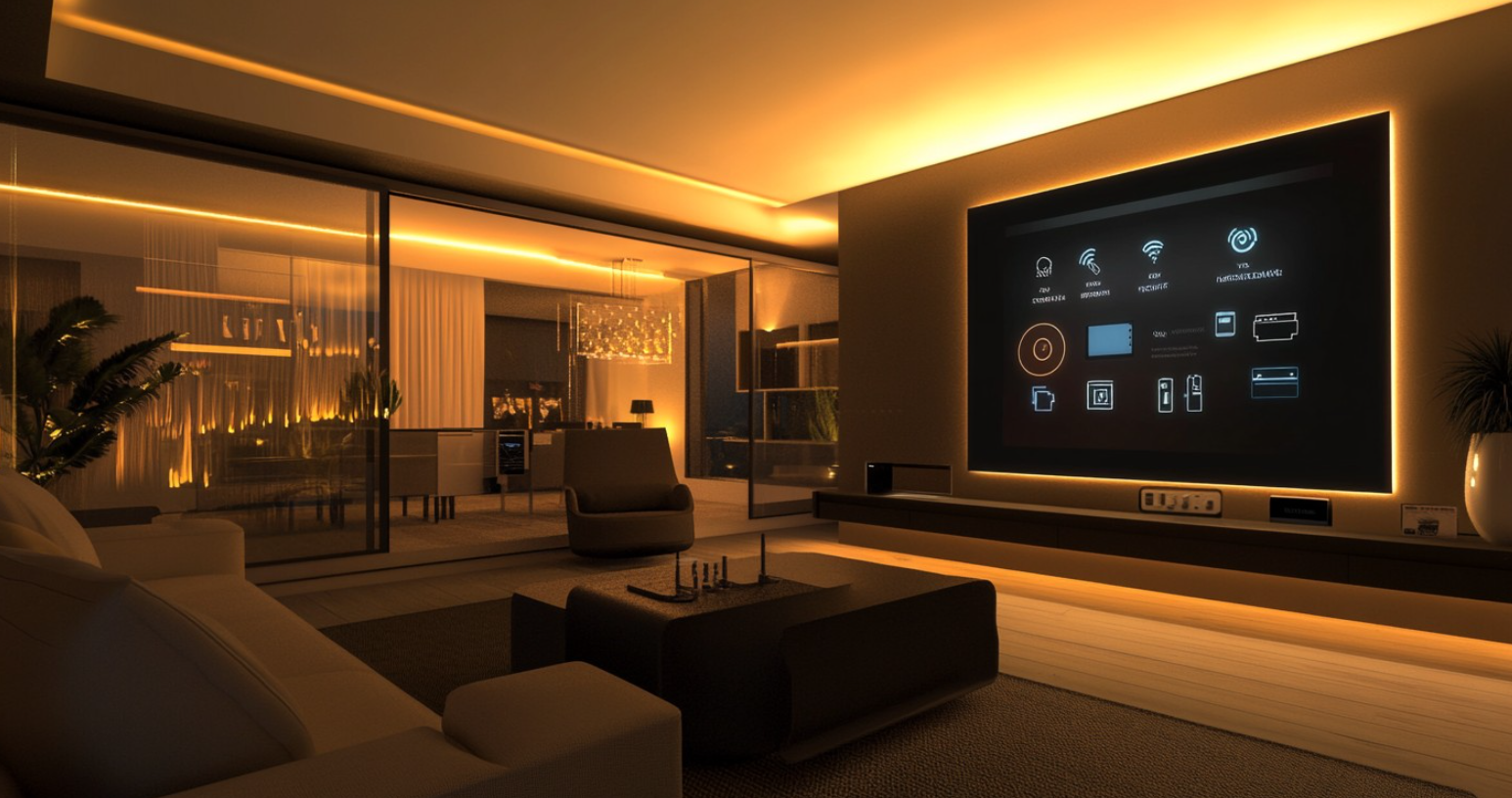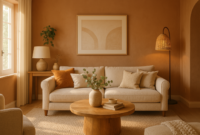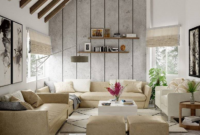Smart Home Interior: The Future of Living Spaces
In the not-so-distant past, the idea of living in a home that listens to your commands, learns your habits, and adjusts its environment to suit your preferences sounded like something straight out of a science fiction novel. But today, smart home technology has leapt from the pages of fantasy into the heart of our living spaces. The modern smart home is not just about flashy gadgets — it’s a harmonious blend of design, technology, comfort, and sustainability.
What is a Smart Home Interior?
A smart home interior is an integration of intelligent technology and interior design that transforms traditional living spaces into connected environments. These homes use a variety of smart devices and systems that communicate with one another and can be controlled remotely via smartphones, tablets, or voice commands. From lighting and security to climate control and entertainment, every component is designed to offer convenience, efficiency, and enhanced living experiences.
The smart home interior reimagines the way we interact with our spaces. It’s no longer just about aesthetics; it’s about creating an environment that’s responsive, intuitive, and personalized.
Core Elements of a Smart Home Interior
1. Smart Lighting Systems
Lighting plays a critical role in setting the mood and functionality of any room. In a smart home, lighting systems can be controlled remotely or set to respond to movement, voice commands, or even time of day. For instance, waking up can be a gentle experience with lights that gradually brighten to simulate sunrise. In the evening, warm dimmed lighting can help signal it’s time to wind down.
Many systems, like Philips Hue or LIFX, allow users to customize color temperatures, automate schedules, and even synchronize with entertainment systems for immersive experiences.
2. Smart Climate Control
Thermostats like the Nest or Ecobee not only let you control the temperature remotely but also learn your schedule and preferences to optimize heating and cooling. This ensures comfort while reducing energy waste. Advanced systems monitor room occupancy, weather forecasts, and energy prices to create the most efficient environment possible.
3. Intelligent Security
Security in a smart home goes far beyond locks and keys. Modern homes feature smart doorbells with built-in cameras, facial recognition, motion sensors, and even AI that can distinguish between a family member and a stranger. Cameras can stream live footage to your phone, and alerts can be customized for different situations. Smart locks, meanwhile, allow for keyless entry and remote access control — perfect for guests or service providers.
4. Voice Assistants and AI Hubs
At the heart of a smart home interior is often a voice-controlled assistant like Amazon Alexa, Google Assistant, or Apple’s Siri. These systems act as the central hub, connecting all smart devices and allowing for seamless control. Want to dim the lights, play relaxing music, and lock the doors? A single command does it all.
5. Smart Furniture and Fixtures
Smart furniture is the next frontier in interior design. Think beds that adjust to your sleeping posture, mirrors that display your schedule, or coffee tables with built-in wireless chargers. Even fixtures like smart showers, toilets, and refrigerators are making their way into mainstream homes, offering personalized settings and energy-saving modes.
Design Principles for Smart Home Interiors
While smart technology brings innovation, the interior design should remain cohesive and stylish. Here’s how to strike the balance:
Minimalism and Clean Lines
Smart homes often follow minimalist design to highlight the technology without visual clutter. Furniture tends to have sleek, modern lines and neutral color palettes, allowing smart devices to blend in or stand out depending on user preferences.
Integrated Technology
Devices should be seamlessly integrated into the home design. Hidden wiring, built-in charging stations, and multi-functional spaces help maintain a clean look while maximizing utility. For example, a media console can double as a storage hub and wireless speaker system.
Zoning and Automation
Smart homes benefit from zoned areas — parts of the home that can operate independently. For example, you might have a relaxation mode in the bedroom that dims the lights, plays soothing music, and adjusts the temperature. Automation routines should complement daily life rather than interrupt it.
Eco-Friendly and Sustainable Materials
Smart design goes hand-in-hand with sustainability. Recycled materials, energy-efficient devices, and water-saving fixtures help reduce the ecological footprint. Additionally, smart meters and home energy monitors help track usage and recommend optimizations.
Room-by-Room Smart Home Ideas

Living Room
The centerpiece of any home, the living room in a smart home is entertainment-ready. Smart TVs that recommend content, voice-controlled sound systems, ambient lighting synced to media, and motorized window blinds all work together to create a movie-theater vibe or a cozy reading nook — depending on the mood.
Kitchen
AI-powered appliances are revolutionizing the kitchen. Smart refrigerators monitor groceries and suggest recipes, while voice-activated ovens can preheat to the right temperature. Faucets with motion sensors, smart scales, and meal planning apps are transforming kitchens into high-tech culinary labs.
Bedroom
The bedroom in a smart home promotes rest and wellness. Smart mattresses adjust firmness during the night, while connected sleep monitors analyze your sleep quality. Lighting can be tuned to match circadian rhythms, and white noise machines or meditation apps can be controlled by voice for optimal relaxation.
Bathroom
From smart showers that remember your temperature preferences to mirrors that display news and weather, the bathroom becomes a sanctuary of comfort. High-tech toilets with cleaning features and ambient underlighting are common in luxury smart homes.
Home Office
The rise of remote work has made smart home offices a necessity. Adjustable standing desks, ergonomic chairs with memory settings, noise-canceling smart speakers, and smart lighting that reduces eye strain can all contribute to a productive environment.
Benefits of a Smart Home Interior
-
Convenience – Control your entire home from your phone or voice.
-
Efficiency – Automations save time and energy.
-
Security – Advanced systems keep your home and family safe.
-
Health and Wellness – Smart tech supports better sleep, diet, and productivity.
-
Customization – Every element can be tailored to personal habits.
Challenges and Considerations
Despite its many benefits, designing a smart home interior comes with its own challenges:
-
Privacy and Data Security – Smart devices collect data that must be protected.
-
Cost – While prices are dropping, a fully integrated smart home can be expensive.
-
Interoperability – Not all devices work together seamlessly, so choosing compatible ecosystems is crucial.
-
Learning Curve – Some systems require time to understand and set up properly.
The Future of Smart Home Interiors
With the rapid advancement of AI and IoT, the future of smart home interiors looks even more intuitive and immersive. Soon, we may see homes that adapt in real time based on biometric data, or environments that change based on emotional cues.
Technologies like augmented reality (AR) and virtual reality (VR) may redefine interior design, allowing homeowners to preview and alter their spaces in real time. Solar integration, smart fabrics, and robotic furniture are already on the horizon.
Conclusion
A smart home interior is more than just a trend — it’s a glimpse into how our daily environments are becoming more responsive, efficient, and in tune with our lifestyles. The blending of design and technology offers a new level of personalization that caters not only to comfort and aesthetics but also to functionality and sustainability.
As we continue to integrate more intelligent systems into our homes, one thing is clear: the smart home of the future is already here, and it’s transforming the very way we live.



